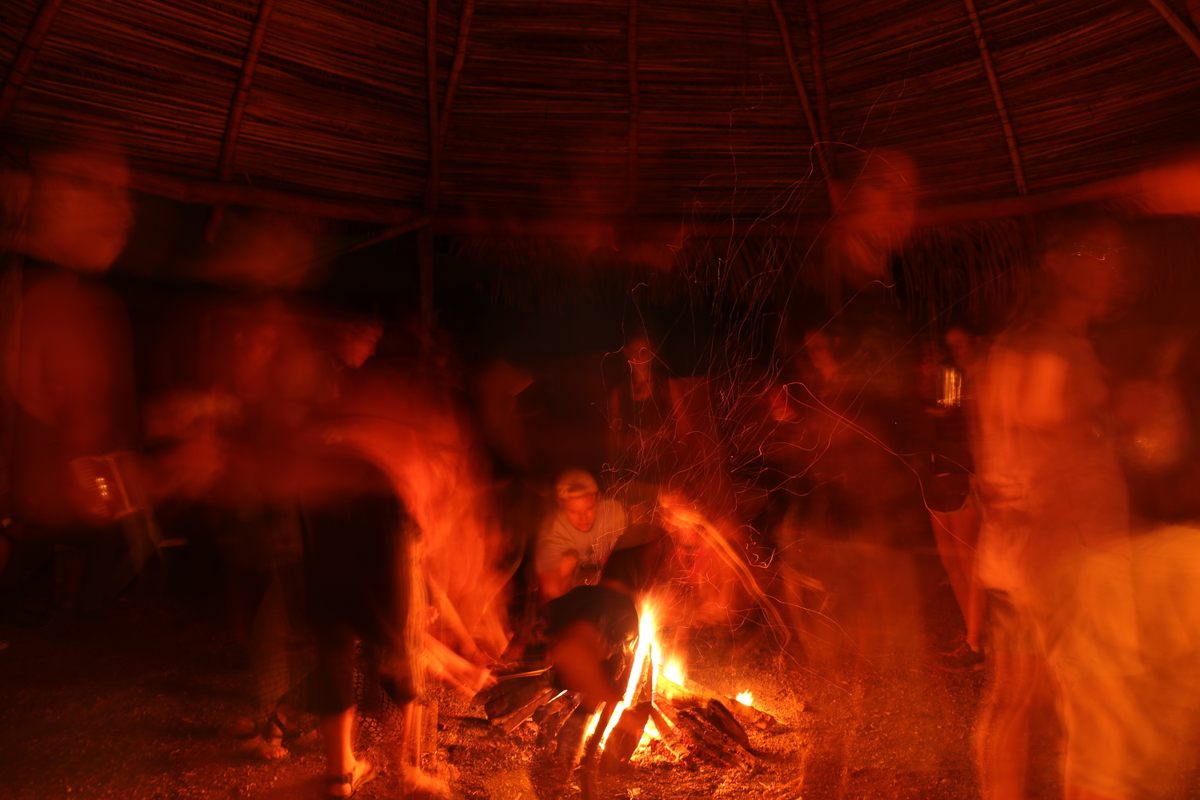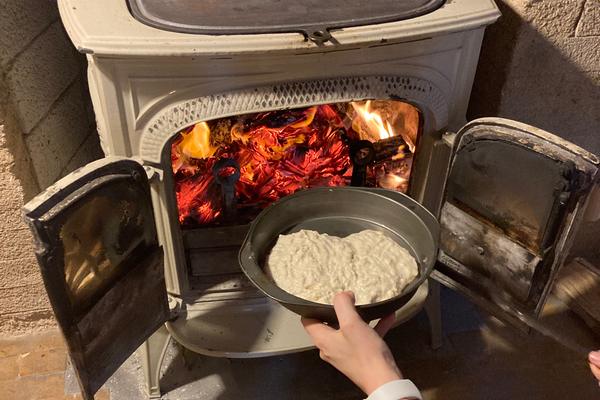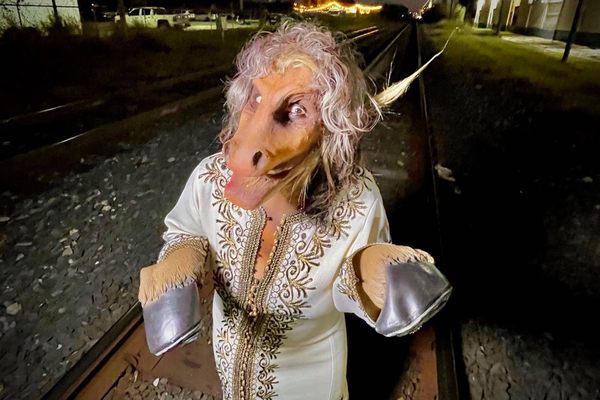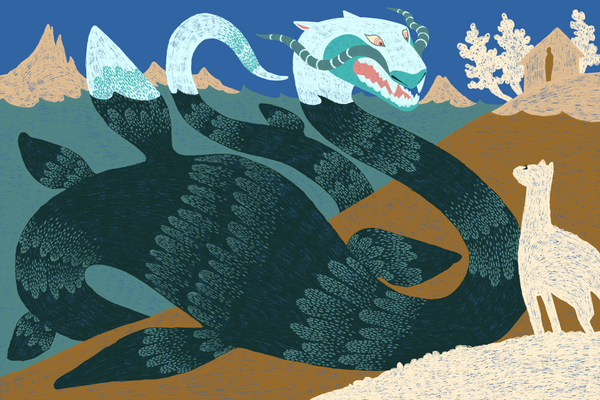
In Search of Nímbulos, Guardians of Costa Rica’s Mountain of Death
Believers say the otherworldly protectors of Cerro de la Muerte’s cloud forests face an uncertain future.
It was around midnight when biologist Paola Muñoz awoke to the sounds of children laughing as pots and pans clattered to the kitchen floor. She listened from her room to an adult voice scolding the mischief-makers. It was followed by the whack of a broom and the barking of Alaska, the resident dog of the field station where she was staying, high in the Talamanca Mountains of Costa Rica. In the morning, she asked the station’s caretaker about the midnight ruckus. “He said, ‘It was those stupid nímbulos, they think it’s funny!’” she recalls. More than a decade after the incident, she regrets staying in her room. “I had the opportunity to see them,” she says. “I was just too afraid.”
Muñoz’s apparent near-encounter with the nímbulos is not unusual in this corner of the Talamancas. These child-like spirits are said to live in the forests around Cerro de la Muerte, the Mountain of Death. Rooted in Indigenous folklore, stories of the nímbulos have evolved in the telling. Spanish incursions in the 16th century tinged them with elements of Catholicism; more recently, concerns about climate change and deforestation have infused the tales with eco-activism. As the landscapes change, the stories change with them, reflecting and influencing the experiences of local people. Now, stories told of the nímbulos echo the plight of the region’s endangered and threatened species, such as the resplendent quetzal and Baird’s tapir: They must be actively protected or face extinction.

The Pan-American Highway winds around the treacherous slopes of Cerro de la Muerte: Mist, rain, and landslides haunt a narrow road through dark passes, and the trees are bent and twisted by the wind, creating a fitting setting for ghost stories. At the nearby biological station where Muñoz had her strange encounter, owner Federico Valverde tells his own stories of the nímbulos. The first time he saw them, they appeared as children hiding behind a fallen tree—there one moment and gone the next. “At first, I didn’t know what they were,” he says. “But I had heard the word ‘nímbulos’ from a Bolivian friend… So I started calling them nímbulos.” Valverde spent a few years researching the term, but couldn’t find any mention in Costa Rica, Bolivia, or beyond. He has heard of other strange sightings around Cerro de la Muerte, but the nímbulos remain special to him. “They are found only in the high-elevation territories,” he says, “where the forest is magical and unique.”
While the nímbulos appear linked to the Mountain of Death, parallels may be found elsewhere in the oral traditions of Costa Rica’s Boruca people, who are indigenous to the greater Talamancas region. South of Cerro de la Muerte, where the mountain range turns to lowlands near the Pacific Ocean, Ulises Morales talks of duendes that have made their homes in the surrounding forests for generations. “I heard the stories from my abuela,” he says, recalling his grandmother’s warnings. “Unusual things would happen. I would come home from fishing with strange children and my grandmother would say, ‘You weren’t with children, you were with duendes.’”
Like the nímbulos, the duendes of Boruca lore are sneaky and agile apparitions, indistinct in the shadows of the forest but sometimes appearing more clearly as children. They are said to tease and trick, or occasionally punish. Muñoz says she’s heard Boruca stories that the spirits warn trespassers away from protected forests—examples of how the tales have evolved as concern grows for Talamanca forests. In a similar story Morales shares, the spirits came to a local hunter with a warning: “You have to ask permission if you need something from the forest.”

The Talamanca peaks, or cerros, are sacred to the Boruca people. “Each cerro has its own cultural meaning and its own spirit guardians,” Morales says. The Boruca believe these spirits are tasked with protecting their particular peak and forest, but as the forests shrink, he worries the local culture will as well. Children do not see the spirits anymore, he says. “Televisions, computers, phones—they block the ability to connect with these beings and the forest.”
According to the nonprofit initiative Global Forest Watch, Costa Rica has lost more than 26,000 hectares of old-growth forest in the last 20 years, nearly five times the area of downtown San Jose, its capital. Forest loss in neighboring Nicaragua and Panama is even more concerning. Conservationists believe the Costa Rican forest is crucial for preserving both biological corridors—stretches of wild land that allow animals to travel across invisible political borders—and unique ecosystems within the region. In response to deforestation and climate change-induced shifts in temperature and moisture, species in tropical regions tend to move their ranges to higher elevations. The same thing appears to be happening to local folklore as the range of the nímbulos, and their stories, diminishes.

While the nímbulos appear to be making their last stand on Cerro de la Muerte, they are not alone. There is hope for them, and the forests that locals believe they protect. In 2006, around the same time that Muñoz awoke to spectral laughter, Los Quetzales National Park was established to protect the habitat of its namesake, colorful birds that live in the forests around the mountain’s lower slopes. A new signposting initiative by local conservationists alerts drivers on the Pan-American Highway to watch for endangered tapirs crossing the pavement. Valverde says local communities are also taking a more active role in protecting the forests. “As far as conservation, tourism, and scientific development, it’s all improving,” he says. “Before, people would cut down the forest to build their houses. Now it is dedicated to conservation. There is no hunting anymore; people make their living in other ways. There is still a lot to be done, but things are improving.”
Isolated on the lonely peak of Cerro de la Muerte, the nímbulos remain, culturally, an endangered species. With a renewed focus to preserve the forests that the spirits call home, they might live on among the clouds, high on the mountain of death.



















Follow us on Twitter to get the latest on the world's hidden wonders.
Like us on Facebook to get the latest on the world's hidden wonders.
Follow us on Twitter Like us on Facebook